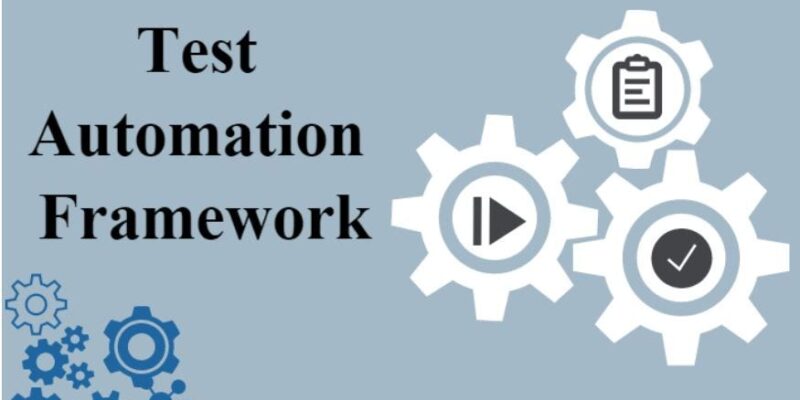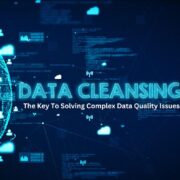As technology advances quickly, companies need good and trusted ways to test software. Test frameworks have become important tools to make testing faster and give better results. But what will test frameworks be like in the future? This article will look closely at how test frameworks are changing. It will explore the different kinds expected to be common in 2024. From old frameworks to new trends, we will see the main features, helps, and problems of each type. This will give businesses and workers useful information to stay ahead when software testing keeps changing. So let’s start learning about what test frameworks may be like in 2024.
Understanding Test Automation Frameworks
Test Automation Framework gives rules for how automated tests will run. They give a plan for testing. This makes scripts used for testing easier to use again and take care of.
Automation frameworks are very important tools for software testing teams. They help teams create good test scripts. Frameworks take over repeated tasks so tests run by themselves. This makes the testing process more correct and faster. Teams don’t have to test the same things over and over.
Automation frameworks help tests run smoothly and easily. By setting up a clear plan for the tests, these frameworks lower the chance of mistakes and missing things. This makes the test scripts stronger and more dependable.
These methods help testing groups handle their trials in a superior way. They can screen and settle issues superior. These structures demonstrate testing and gather the best techniques for each circumstance.
It is important for software projects to choose the right type of automation framework based on what the project needs. Frameworks like linear, modular, keyword, data, or hybrid each have their own features that suit different test needs. While automation helps development, picking the framework depends most on what the tests require.
Test Automation Framework is very important for software testing today. They provide organization, speed, and dependability to testing. Frameworks help testing teams build high-quality programs quickly and at a low cost.
Common Types of Test Automation Frameworks
It is important to learn about the different kinds of test automation structures used in software testing. Each structure has its own qualities and is picked based on what the project needs. Exploring test automation deeper helps recognize these frameworks that are key parts of software testing.
The first is the Linear Automation Framework. It has a simple way of working called “Record & Playback”. This lets testers record each step in a test case. Then they can play them back whenever needed. It means testers don’t have to write test scripts themselves.
The next testing method is the Modular-Based Testing Framework. For this, the app being tested is broken into different parts called modules. Unique test scripts are made for each module separately. This makes any changes to a specific module’s functions easier because the test scripts for that module can be changed without affecting others. It also improves how manageable the test scripts are overall.
In a Keyword-Driven Testing Framework, the process is made even simpler. The writing of scripts and testing jobs are done separately, with keywords standing for specific functions in a test case. These keywords lead the testing process, making it easier to understand and control even for people without a technical background.
The Data-Driven Framework separates test data from the test scripts, making it possible to run the same script with different data sets. This lets testers try more situations by using various data with the same scripts. It expands the testing to cover a wider range of what could happen.
Finally, the Hybrid Testing Framework combines two or more of the frameworks discussed above. This customized framework uses the strengths of each one combined and reduces the weaknesses. Because of this, it is a good choice for projects that are very complex.
These test automation frameworks, each with their respective strengths, empower testers to automate tasks with precision and efficiency. The choice of framework isn’t a one-size-fits-all situation but rather, depends on the complexity of the project, the capabilities of the testing team, and the specific requirements of the testing process. As we edge closer to 2024, we can expect these frameworks to evolve, adapting to the ever-changing demands of software testing.
Anticipated Evolution of Test Automation Frameworks by 2024
In the future, test automation frameworks will change a lot. This change will happen because we need to make testing faster and better. Frameworks that don’t need code are expected to become more popular. They let people make test scripts quickly without needing coding skills. This will let more people on the team help with testing.
Working together to test things, which involves many people involved, are also likely to become more common. This method allows for full and complete testing, as different views can come together to find possible problems or mistakes, making the software product stronger.
Testing places based in the cloud will probably become more common, given their ability to provide testing solutions that can expand or get smaller as needed and save money. These places help teams work together easily and allow simple sharing and access to test plans, scripts, and reports.
Also, because Agile and DevOps practices are becoming more common in software development, there will be a big focus on continuous testing and combining new code. This change requires automation methods to be easier to adjust, grow, and work well to support regular code updates and make sure software works smoothly.
Testing teams will need to change with advancements in how test automation works. Technology is making tests smarter, better, and faster. Tests will become more strategic, efficient, and focused on quality. Teams must change too. They need to be flexible, try new ideas, and learn the latest testing methods. Moving away from old ways of testing will lead to higher quality software tests in the future.
The Rise of AI-powered Test Automation Frameworks
By 2024, artificial intelligence may have a big impact on how we test software. AI can make test frames more efficient and precise. This will let us explore new ways to test programs. The change will involve smart test creation. AI algorithms can generate complex test cases based on what software is supposed to do and what it needs to do. This means we won’t have to write test cases by hand. It will save time and reduce mistakes compared to people writing the tests.
In addition, the beginning of AI-powered self-fixing methods will make these structures stronger. Self-fixing test automation lets the system see and change to transformations in the application being tested by itself. This skill, powered by AI, is anticipated to hugely reduce the need for manual upkeep of test expressions, making the testing process more strong against transformations in the application’s user interface or capabilities.
Artificial intelligence is helping test automation with predictive analytics. AI programs use past data to foresee possible problems or crashes in software. This lets testers deal with issues before they become big problems. Predicting issues improves the overall quality of the software and makes bugs less likely after release.
AI’s influence also extends to the automation of visual testing, a task traditionally difficult to automate due to its subjective nature. AI can be trained to understand and replicate human-like visual perception and judgment, making it possibl to automate complex visual tests. This includes verifying UI elements like layouts, fonts, colors, and responsive design across different devices and screen sizes.
In addition, with AI’s ability to learn, test automation systems will keep getting better each time a test is run. This continuous learning finds patterns and connections that people may miss. This leads to more complete and useful testing.
Yet using AI’s power in test automation setups needs a strong knowledge of AI tech and how it can be used in software testing. It also asks for a change in thinking from old testing ways to more progressive, data-based strategies. While this new place may offer some troubles, it has a huge opportunity for lifting software quality and testing performance to unmatched levels.
Enhancing Predictive Analytics in Test Automation
In the future, test automation will use predictive analytics a lot. This type of advanced analytics uses math algorithms and machine learning on past data. It helps predict what will happen with software testing later on.
Applying predictive analytics to test automation can greatly change how testing is usually done. By predicting what might go wrong, it lets the teams get ahead of problems. They can focus on fixing small bugs before they become bigger issues. This future-looking way also improves how test suites are run. It sets priorities for test cases based on what effect predictions say they will have. This boosts how well tests are done while making testing work better.
For predictive analytics to work well, it needs good data. To use it for test automation, we need to gather and organize lots of related, right, and up-to-date data. Its power comes from having a large collection of past and present data. This data foundation allows for insightful predictions.
There is another thing to think about which is the machine learning part. Machine learning in predictive analytics keeps making its predictions better. Each time the test questions are done, the system learns from the results. It changes and gets better at its predictions. This starts a good cycle where the system keeps learning and getting better. It helps the prediction system evolve more and get more accurate all the time.
While using prediction rules for test automation has promise, it is not simple. It needs a clear grasp of statistical methods, machine learning processes, and data handling. Also, blending prediction rules into current testing plans requires careful coordination and technical skill.
Facing challenges, predicting the future and taking steps before problems arrive make predictive analytics important. It improves software quality by expecting what will happen. It makes testing smarter and more effective. It lowers the chance of issues after software is released. As we get closer to 2024, predictive analytics will be key to testing. It will lead testing to use smart strategies based on information.
Challenges and Opportunities in Future Test Automation Frameworks
Looking ahead to the future of test automation setups, it is clear that this trip has both difficulties and chances.
Making sure that changing test frameworks works with how software is made and updated quickly is a big challenge. The speed software is made at is especially fast with Agile and DevOps. There, software is joined together and put out often. Test automation frameworks need to keep up with this fast rhythm too.
However, these possible problems also provide many chances. A big chance is in the need for constant testing. This need is predicted to power the advancement of automation systems into more strong and efficient frameworks that can quickly find and fix issues, thereby sustaining the software quality even with quick deployment cycles.
In addition, the spread of AI in testing offers hopeful possibilities. AI’s changing impact on test automation structures can lead to smarter and more flexible testing processes. Intelligent test creation, predictive investigation, self-restoring test automation, and visual testing automation are a portion of the territories that stand to profit from AI consolidation, making the testing process more productive, intelligent, and strong to change.
But taking advantage of these chances requires completely understanding AI technologies and how they can be used in software testing. It also needs changing from old testing methods to more advanced, information-based ways.
The path ahead for test automation frameworks will have some problems. But these issues create new chances for big improvements too. They can help testing frameworks work better, adapt more, and become smarter. Looking ahead to 2024, the hope for more advanced, flexible, and effective testing methods gives an exciting view of what test automation frameworks can be.
Find out how our enterprise-grade mobile application development company can help you manage large-scale app portfolios with ease and simplify your testing process.
Conclusion
The path that test automation systems will take is exciting. It will change with new technologies, different ways of making software, and software getting harder to make. In 2024, we think there will be automation helped by AI. There will also be testing without writing code. Systems will use past test results to predict problems. Tests will run in cloud computing.
AI being added to test automation setups may cause big changes to how testing is done. With smart ways to make tests, self-fixes, using data to see what will happen, and automating visual testing, AI can help testers deal with complex software better and test more accurately and quickly. Looking at data to predict things is especially important as it can change how we plan testing. This allows being ready before problems happen and making testing more fact-based.
This expected change brings many chances, but it also shows new kinds of troubles. Keeping pace with quality, handling data for future analytics, and getting the needed smarts to use AI tools are some of the barriers that testing groups will have to work through.
Despite these challenges, the future of test automation frameworks shines bright with promise. This exciting new frontier beckons software professionals to broaden their technical knowledge, adapt to changing paradigms, and harness the power of AI and advanced analytics. It’s an invitation to push the boundaries of traditional testing and leap towards a future where software quality is not just a requirement, but a strategic asset. In this journey, continual learning, innovation, and a clear understanding of the evolving frameworks are the keys to staying ahead of the curve. As we approach 2024, we look forward to an era where test automation frameworks drive efficiency, quality, and innovation in the software testing landscape.
Frequently Asked Questions
- What is a Test Automation Framework?
A Test Automation Framework is a collection of rules that decide how automated tests will run. This makes test scripts easier to reuse and maintain over time.
- What are some common types of Test Automation Frameworks?
There are different main types of test automation frameworks: Linear, Modular-Based, Keyword-Driven, Data-Driven, and Hybrid. Each type works better for certain kinds of tests or project difficulties.
Test automation frameworks are expected to change by 2024. Some experts think frameworks will become more intelligent. Frameworks may be able to learn from past tests and find bugs on their own. Tests could
Important future changes include automation without coding, teamwork on testing, cloud-based test areas, and a greater focus on always testing and joining parts due to flexible and DevOps methods.
- What role will Predictive Analytics play in Test Automation?
Predictive analytics uses math formulas and machine learning methods on past data to predict future results for software testing. This allows companies to prepare and make decisions based on data. It helps create a workplace culture driven by numbers and evidence.
- What are some challenges and opportunities in Future Test Automation Frameworks?
Making sure things work together with the fast software development and deployment processes can be hard. But it also makes chances like always testing, using AI, and smarter, more changing how we test.














Comments